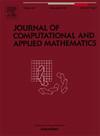Comparision of Conformable and Caputo fractional grey models
IF 2.1
2区 数学
Q1 MATHEMATICS, APPLIED
Journal of Computational and Applied Mathematics
Pub Date : 2025-01-11
DOI:10.1016/j.cam.2025.116500
引用次数: 0
Abstract
In recent years, fractional order derivatives have been encountered in various fields of science, particularly in applied mathematics. Although there are many fractional derivative definitions in the literature, there are very few studies on which derivative definition works better in a mathematical model. In applications, it is seen that calculations are easier with the model using the Conformable derivative operator due to the simplicity of the derivative definition. However, the Caputo derivative operator, which is considered to be more effective in models related to time series due to its memory property, leads to more complex calculations. In this article, two fractional grey models were created in the same structure with Conformable and Caputo derivative operators and their applications were implemented on the same data sets to a performance comparison of the fractional operators. The working mechanisms of fractional grey models constructed with both Caputo and Conformable derivative operators were demonstrated in detail. Solution of the whitening differential equation in the Caputo fractional grey model was obtained using Laplace transforms. Here, Conformable and Caputo fractional grey models were applied to the forecast of three real time series and their forecast performances were compared. Data on China’s annual domestic energy consumption, annual wind energy consumption, and areas affected by drought disasters were utilized as real-time series. It has been observed that Conformable fractional grey models provide more accurate predictions with lower errors for certain datasets, while Caputo fractional grey models demonstrate better performance for others. This study is the first study in the literature that compared the Conformable and Caputo derivative operators on a grey model.
求助全文
约1分钟内获得全文
求助全文
来源期刊
CiteScore
5.40
自引率
4.20%
发文量
437
审稿时长
3.0 months
期刊介绍:
The Journal of Computational and Applied Mathematics publishes original papers of high scientific value in all areas of computational and applied mathematics. The main interest of the Journal is in papers that describe and analyze new computational techniques for solving scientific or engineering problems. Also the improved analysis, including the effectiveness and applicability, of existing methods and algorithms is of importance. The computational efficiency (e.g. the convergence, stability, accuracy, ...) should be proved and illustrated by nontrivial numerical examples. Papers describing only variants of existing methods, without adding significant new computational properties are not of interest.
The audience consists of: applied mathematicians, numerical analysts, computational scientists and engineers.

 求助内容:
求助内容: 应助结果提醒方式:
应助结果提醒方式:


